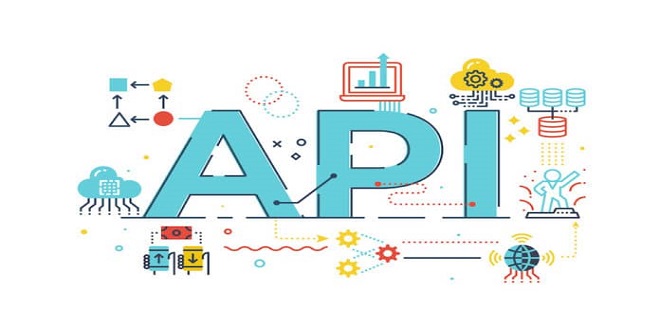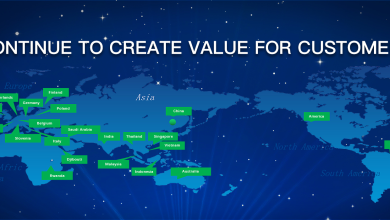Platforms and APIs: A powerful combination

Digital transformation is often viewed as a change in the organization and backend systems to make it more agile. When we think about the benefits digital transformation can bring, however, our focus should shift to how data impacts business models and how digital markets create new value.
Digital transformation
Take a look at the technological and internet evolution over the past 20-25 year. Each time a particular component or variable (determining market supply or demand) was digitalized, it opened up a new range of interactions that supported the creation entirely new markets and companies. This enabled them to unlock new value.
Companies like Amazon began digitizing consumption in the late 1990s. Before that, consumption was recorded in sales receipts and was never used to generate value for the business.
Amazon used collaborative filtering and purchase data to create new market interactions, such as “people who bought this also purchased …’, encouraging people to make more purchases. This consumption data led to new value.
Social networks were a big thing in the early 2000s, but identity could not be verified online, making it difficult to build trust. Facebook digitalized identity to make it easier for people to verify and use it to build trust and market interactions.
Facebook Connect was launched in 2008 and allowed users to log into their accounts and verify their identities via an email address from a company or university that supported real-time transactions. It allowed for the digitalisation of identity, which led to the rise of the sharing economy and companies such as Airbnb.
Another important development occurred around the same time: Google’s acquisition Keyhole Technologies (eventually Google Maps), and the emergence the Cloud.
Apple launched a smartphone in 2007 that combined a phone and digitised location services thanks to Google Maps. This led to the rise in location-based services like Uber. A digitized moving car could be connected to a request for a ride and match it with a requested location.
Digitalization of a component creates new opportunities for market interaction, unlocking the value of the digital economy.
Digitising value chains
There have been many new forms of digitization over the past 7-10 years.
Reputation is important when you hire someone remotely
Machine performance – Digital twins of machines are created, and the data they provide provides an overview of the entire industrial process
Workflow/business processes: As silo-based software migrates to the Cloud it can interact with and connect with other Cloud hosted software.
These three elements, humans, machines, and processes, can be combined to align activities and digitalize entire industrial systems.
Common practice is to have digital machines that are programmed to generate and collect data. The machines can be used by workers to interact with other processes in other companies, further digitizing the entire value chain.
This is where platforms and APIs are most powerful. Once we begin digitizing supply and demand, and every value-creating part of the value chain we can restructure entire business model.
Platform models
As more processes are digitalized, new value is created. More specialized firms that only perform one function within the value chain are emerging. They transform their core activity into an API that can be integrated into other companies’ processes.
Smartcar is an example of this. It digitizes every function of the car and allows developers to access it through APIs. This micro-value can be used to build entire companies.
The value chain was vertically integrated in the past, with multiple products and parts. All elements, including infrastructure ownership, product creation, and customer service, were managed internally. The flow of value was very linear with an end-to-end pipeline manager. Create the product, ship it to the customer, and then the customer pays.
The rise in digitalization, connectivity, and data allows powerful companies to use a platform-based model. This platform provides a central infrastructure that external parties can connect to – consumers and producers – and creates value for them. The platform business is only one of the creators of the services and products.
The platform’s role is to provide the infrastructure and set the rules for governance regarding interactions that are permitted and discouraged (and not), as well as facilitate new markets for value creation at different points along the value chain.
Companies now offer open infrastructures that allow players to connect and interact, rather than owning the entire value chain via vertical integration.
The network effect
Platforms can create a network effect, which opens up new opportunities for businesses. The supply choice is increased when more producers join a platform. This attracts more customers. The platform’s influence and value as a communication channel increase with more users joining. This encourages more producers to join. The platform’s value increases as more consumers and producers have access to the market.
However, there is a downside to the platform economy. Increasing data accumulation leads to greater stakeholder dependence upon the platform as more providers contribute more data.
Platforms not only create value but also increase data concentration. Platform business models are the reason why some of the most successful and fastest-growing companies around the globe today use them.
The single most important aspect of the platform economy, however, is the need for a new type of control.
Open v control
Android was initially an open platform that allowed third-parties to create new phones. This is unlike Apple. Android quickly realized that there was a cost to being open; the lack of control.
Android’s openness allowed companies like Samsung, LG, and Amazon to “fork” its operating system to create their own Android ‘app stores’. This shifts power away from Google. Forking is the process of obtaining the source code for a software program to make a new version.
Google was motivated to establish new control points as Google Maps is a powerful ecosystem asset. Self-driving cars and phones both need navigation maps.
Google removed Google Maps from its Android infrastructure and placed it within its enclosed Play System. This required partners such as phone makers to license Google Play. Partners had to sign up for the Open Handset Alliance, which prohibited them from creating their own app stores.
Impact of APIs
APIs allow businesses to change and remove business boundaries. Traditional companies managed all activities internally. This was because it was expensive to manage externally. Digitalization has made it possible for companies to sign up for APIs and gain the knowledge of specialists.
For example, start-ups may focus on a single part of the value chain and then expand. Vertical integration is being replaced by specialization.
Rebounding the value chain
Initial digitisation allowed for unbundling. This allowed activities to be done outside of company boundaries. However, for consumers who engage with multiple providers, this made it very costly. Platforms can aggregate or rebundle providers to create a consistent customer experience.
Media companies were specialized in creating great content and controlling the distribution channel. The internet de-bundled distribution and repackaged it as a news feed. This allows anyone to share the news for free.
Wiki technology and publishing tools developed by companies like Adobe opened up new avenues for content production. This explosion in content and distribution methods prompted Facebook (news feed owners) and Google (search engine owners), to rebundle and scale content.
This is where the value shifts away from commoditised media businesses to specialists managing rebundling about customers, engagement, and data.
Similar to the above, music could be unbundled from an album and rebundled into a Spotify playlist. This increased the power and value of companies that rebundle the playlist. Open Banking and APIs have revolutionized financial services. Traditionally, banks had their products and services distributed through a network of agents and branches. With Open Banking and APIs, financial products can be embedded into existing ecosystems.
PSD2 regulations will allow third-parties access to banks’ data. Financial services will be rebundled around the person who understands customers the best, can better manage credit and is able to offer the right financial services at right times.
Square and Shopify have entered the financial services industry. They are in a strong position to rebundle as they don’t depend on financial services to make a profit. Instead, they use their software to do this. They have access to better data and can offer subsidised services which in turn encourages more data creation.
The power and potential of ecosystems
Industrial boundaries are eroding. We’re now able to unbundle components from traditional value chains and create a completely new proposition for our customers.
This is the power and potential of APIs. Their management tools and increased connectivity facilitate the process of rebundling. Platforms, which have a single view of customer activity and can quickly rebundle multiple propositions to the end user, are also a powerful tool. Platforms and APIs are a powerful combination.





